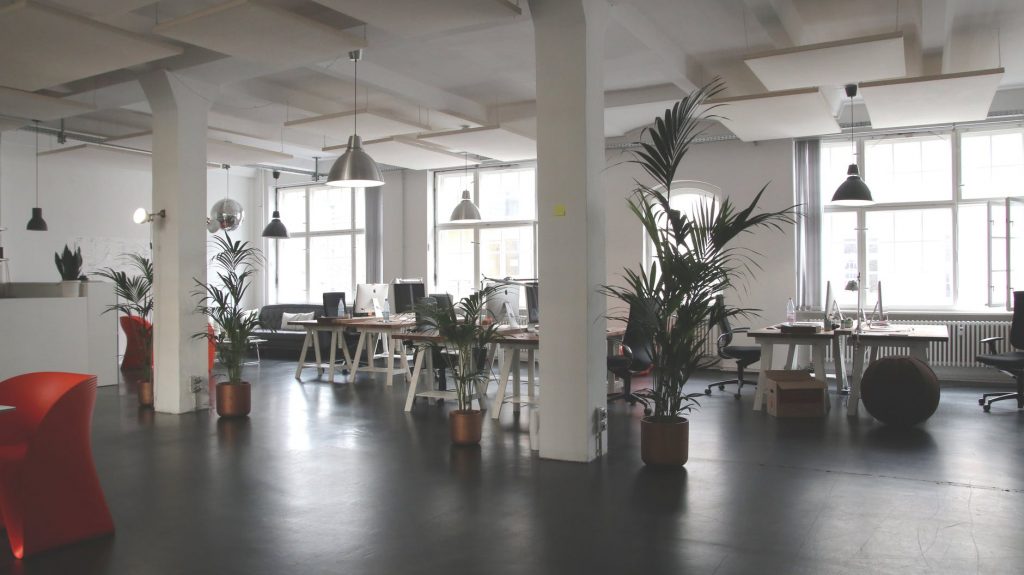
When selecting a new employee, you search carefully for the correct candidate that checks all the boxes out of the skills, character, and experience outlook. It is important to find someone with the proper tools for your job, who’d match with the present staff, and that will continue to assist and encourage the company culture. If you discover the appropriate individual, it would be obvious.
When it comes to achieving the company long term goals however, providing the ideal environment is equally important as getting the proper employees for the team. Do not waste an ounce of the gift you have cultivated in your own organization.
Here are steps to enable your employees with the resources they will need to work optimally. Today’s office workers spend an average of 37 percent of the time each week sitting in meetings. That is why designing meetings rooms which meet employees’ needs equally visually and practically is a crucial step in a successful business plan. In the modern contemporary offices, a dull conference room with only a massive table, uncomfortable seats, and white walls would be your assembly room equal to handing a brand new worker a No. 2 pencil and spiral-bound book on their very first day at work in lieu of a notebook and the wi-fi password.
To help, we have assembled the three main measures in designing your assembly rooms for much more creative and effective encounters.
Step 1: Know Worker Requirements
The very first rule of thumb of successful meeting room layout is that one area doesn’t suit all. In the past, old-fashioned offices set the exact same version of the spaces in a variety of dimensions and call it a day. There was no way to equip your employees with what they should have to execute fantastic meetings.
The increase in time spent in meetings equates with the growth in the sort of meetings that frequently break out from offices. From collaborative brainstorming sessions using one team to big strategy meetings with outside customers, 1-on-1 telephone calls to video conferencing sessions, each kind of assembly needs different sorts of requirements to be fulfilled in the space.
To deal with the numerous needs of your workspace, we propose making four kinds of meeting spaces accessible for workers:
- Focus rooms for casual telephone calls, one-on-ones, and convention calls
- Huddle rooms for advice meetings and brainstorm sessions for small teams
- Small meeting rooms for official inner meetings
- Large seminar rooms to get Larger meetings, most frequently with customers or outside visitors
Each area serves its purpose and ought to be booked accordingly. You may read about the increase of the huddle space and why certain kinds of rooms are significant in this current blog article: Could I have Some Privacy, Please? Why We Want More Huddle Rooms to Stay Focused and Powerful.
Step 2: Consider Space Design and Equipment
Every sort of meeting room cited above needs a different quantity of space. You do not want workers popping into big conference rooms to get a fast one time, as you do not desire to meet planners looking fruitlessly to get a space that meets their specialized requirements for the large upcoming presentations.
When designing assembly rooms to satisfy the requirements of workers, colour is an often-overlooked component. Psychologists and business experts concur that the colour of an area has an immediate influence on the moods and the levels of productivity for the people inside.
Studies have discovered that dull colours like whites, greys, and cream induce feelings of despair and melancholy in employees that are usually stuck indoors all day with fluorescent light. If you are looking up out of the screen to your white wall, then do not worry, you’ve got choices.
Calm colours, like colours of greens and blues, boost productivity, focus, and comfort. These palettes are most seen in nature to promo1`te a general awareness of well-being. Cheerful yellows, believed colours of confidence, are believed to activate innovation and creativity. This really is a superb selection for those creatives in your workplace. Other bright colours, like colours of crimson, are shown to improve heart rate and promote passionate communication. This is a great choice which, when paired with the appropriate office interior design and used responsibly, can draw attention to significant spots at the workplace.
Now that you have chosen a colour, it is time to concentrate on furniture. Select pieces that are flexible enough to be utilized for casual creative relaxing and comfy enough for extended stretches of sitting for significant meetings and discussions. If your guests begin squirming in their chairs in distress, you know that you are running up against the clock and also attention is elsewhere.

Last, in-room AV and workplace equipment has to be considered for functions like digital presentations, video conferences, and whiteboard sessions. Would you want displays, projectors, or movie abilities? Not every room requires every apparatus, therefore do the decor and design of your assembly rooms strategically.
Select up our eBook to discover more tools essential to maintain a successful assembly. Download PDF here.
Step 3: Pick Your Room Titles Carefully
As we have written about earlier, conference room titles are a very important bit of your organization brand. It has been said that firms that have their seminar and meeting rooms named based on themes have done well to convey their own values and culture.
Creativity begets creativity. That is why it’s very important to nurture a feeling of creativity and inventiveness. And it is not only the specialists who think this. Some of the greatest names in the company would have dispersed the seeds of imagination throughout their workplaces with innovative conference room titles. Think of it as having a well-defined personality, a clear sense of identity that your employees and clients alike could correspond to. This is more commonly found on businesses that are in the lifestyle or leisure category (this luxury accommodation in Hobart does it particularly well), but more and more offices have started adopting this concept into their interior design choices.
—
With these three steps in your mind, it is possible to completely transform your workplace assembly civilization. Switch ordinary meeting doldrums into creative power sessions. Shaping a better assembly strategy raises liberty and entrepreneurship among workers throughout the whole organization. It strengthens your brand and creates a positive workplace culture. Plus it generates spaces that increase communication and cooperation among workers.
Moreover, by incorporating the ideal tools and technologies to streamline the whole assembly room management procedure, you free workers from some of those tedious tasks related to booking and planning meetings.
A better procedure and spaces which are more creative will cover themselves in dividends having a general enhanced culture of encounters. There is no telling where your business may move from there.
5 Great Seminar Room Examples
Though many employees are gravitating toward relaxed workplace surroundings, the contemporary seminar area remains an essential part of the workplace. They supply a private area for bigger meetings, offer an area to go over confidential subjects and adapt to formal parties. These are very important to businesses that a particular group of people have begun creating venue for hire spaces in Melbourne to accommodate this need as some start-up companies simply could not afford to have a meeting room. A house to meetings and collaborative activities, conference rooms are an integral part of your workplace. They’re home to cooperation and a place to create a style statement. Listed below are a few of our favourite seminar room’s layout thoughts.
1. THE MODERN CONFERENCE ROOM
Elegant conference room seats positioned around a very long table produces a modern meeting room atmosphere. These spaces are designed for big teams and supply equal access as fulfilling participants gather around the dining table. Best for idea sharing and cooperation, the contemporary conference room supports the creative employee.
2. THE RELAXED 3CONFERENCE ROOM
A more relaxed atmosphere in the seminar room promotes cooperation, creativity and also the stream of thoughts. A convention table in a lower elevation, a reassuring sofa seat offering relaxation for extended meetings, and also a collaborative whiteboard will keep attendees in ease. This type of conference rooms allows for more unconventional design choices; emulating designs that you would find in a storytelling hotel rather than a regular office.
3. THE STUDIO
Meetings frequently happen outside conventional conference rooms. Nowadays, creativity requires destinations which foster active participation and equal chance to contribute. A studio room, frequently with a standing bar table and wall area for sharing and iterating, can make the imaginative process much more collaborative.
4. THE CAFE
Workers seek cafe spaces to join and refresh, and they’ve become a favourite place for face-to-face meetings. Equipped with a “third place” vibe, cafes at the workplace supply a friendlier, more relaxing setting than a conventional, private conference space.
5. THE IDEATION HUB
When coworkers are required to use their creativity and collaborate, a platform that promotes movement and having the necessary tech is essential. Stool-height chairs offers equal chance to donate as individuals co-create, refine and discuss thoughts. These configurations encourage generative cooperation sessions and foster the fluid interaction between individuals, ideas, technology and tools. Should you need more ideas, take look at the list of conference venues in Melbourne to learn about what they are doing to their interiors.